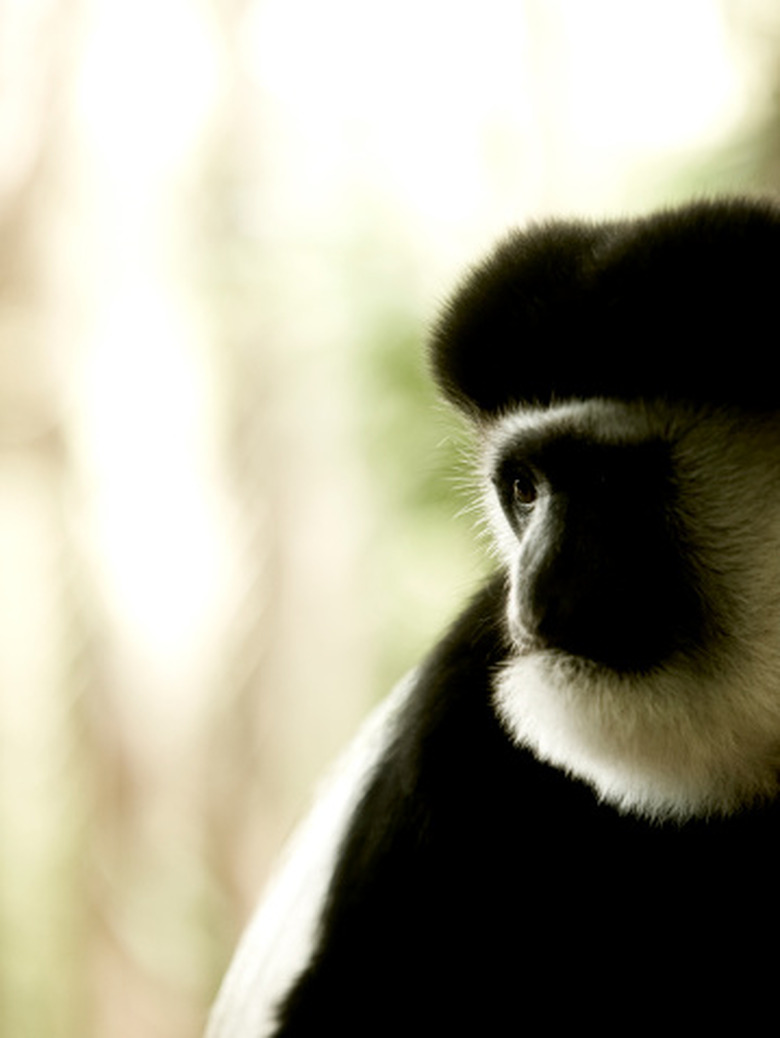The Four Factors Of Natural Selection
Natural selection is one of the four basic premises of evolutionary theory, alongside mutation, migration and genetic drift. Natural selection works on populations with a variation in traits, such as coloring. Its main premise is that when there is a trait that allows one individual to better survive in an environment than another, the former is more likely to reproduce. Natural selection occurs if four conditions are met: reproduction, heredity, variation in physical characteristics and variation in number of offspring per individual.
Reproduction
Reproduction
In order for natural selection to act on a given population, that population must reproduce to create a new generation. Over many generations, individuals with traits most suitable for their environment tend to reproduce more than those that don't. As such, natural selection works to maximize the number of individuals with those favored traits while those with less advantageous traits slowly die off. The higher the reproduction rate of a population, the higher the competitive pressure is on an individual to survive. This pressure ensures that only the most suitable members survive while the weaker members perish. It follows that the population will soon become full of members exhibiting those traits that give the species a better chance of survival.
Heredity
Heredity
Heredity works hand-in-hand with reproduction since the genes of the parents combine to create the genes of their offspring. Parents with advantageous traits must pass those traits on to their offspring in order for natural selection to act. Otherwise, the genes which create the advantageous traits would die with the parents without being copied to the next generation. Speciation occurs when members of a species are geographically isolated into differing environments, allowing for unrelated lines of heredity. Over time, traits in each population begin to differ to better suit them for different environments. Advantageous genes for one environment begin to differ from those for a different environment and the two populations begin to diverge. Given enough time, the number of differences between the populations can become so great that they can no longer interbreed.
Variation in Characteristics
Variation in Characteristics
Natural selection can only occur within a population when members of the population have a variation in individual traits. For example, a study of natural selection on color within a population requires different individuals to have varying colors. Without a variation in characteristics, there are no traits for nature to "select" over others.
Variation in Fitness
Variation in Fitness
In biology, fitness has a more technical meaning than its common definition. Within the context of evolution, fitness is the ability of an organism to survive and reproduce as much as possible. Varying levels of fitness in members of a population is a prerequisite for natural selection to occur. Some individuals must have traits that allow them to better survive and reproduce more often than others. Otherwise, natural selection cannot act to produce more individuals with beneficial traits and fewer with less useful traits.
Cite This Article
MLA
Braybury, Luc. "The Four Factors Of Natural Selection" sciencing.com, https://www.sciencing.com/four-factors-natural-selection-8140305/. 24 April 2017.
APA
Braybury, Luc. (2017, April 24). The Four Factors Of Natural Selection. sciencing.com. Retrieved from https://www.sciencing.com/four-factors-natural-selection-8140305/
Chicago
Braybury, Luc. The Four Factors Of Natural Selection last modified August 30, 2022. https://www.sciencing.com/four-factors-natural-selection-8140305/
